At Jiffy Lube you can maintain your tires by rotating them at an average cost of $40. This is an approximation because Jiffy Lube rotation costs vary depending on location. Though $40 might be a little high than you expected for a tire rotation it is around the average price for a tire rotation. However, you do save a lot of time getting your tires rotated while at the same time getting your oil serviced.
What's In This Guide?
Primarily Jiffy Lube provides an oil changing service, but they do take care of some other vehicle maintenance needs. Along with changing filters, brakes, and other fluids, Jiffy Lube can also rotate your tires.
Typically, they will charge around $40 to rotate your tires. This price does fluctuate a little from Jiffy Lube to Jiffy Lube, which is largely due to the average income rate in different areas and states. Though you can get your tire rotated for much cheaper at a place like Walmart, you do save a lot of time by doing one-stop for all your maintenance needs.
What Is a Tire Rotation?You might be wondering what a tire rotation is and why you should be paying $40 for it. Well, a tire rotation is simply swapping the wheels of your vehicle around. In most cases, the front wheels will be swapped with the rear wheels and there will often be some kind of left to right switch involved as well.
Why Should You Get Your Tires Rotated?It is important to rotate your tires so that they can wear evenly. Because different wheels have different jobs depending on where they are on your vehicle, they experience different levels of stress.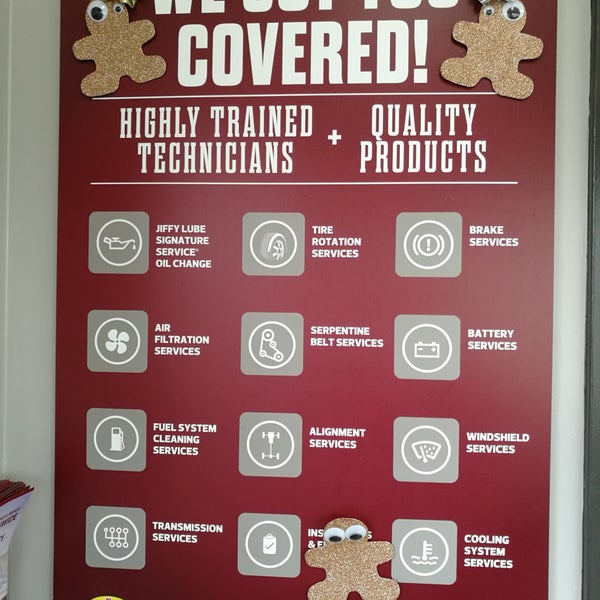 For example, the front tires are going to experience far more wear than the rear tires.
For example, the front tires are going to experience far more wear than the rear tires.
Because the front tires are used for turning, they have increased edge wear which rounds the tire out. If not rotated; the tires will become a completely different shape compared to the rear tires which will retain a flatter tread shape.
Furthermore, most vehicles have a higher braking percentage in the front. Once again, the front tires are working harder because they are doing more work to slow the vehicle down. The percentage on most front-wheel-drive vehicles is around 80% front braking to 20% rear braking.
Additionally, whichever tire has more weight will experience more wear. These are once again, usually the front tires as that is where the engine is and where the majority of passengers are. Furthermore, the driver’s side tire will wear more because most often the driver is the sole occupant in the vehicle.
Finally, the drive of your vehicle will affect the wear of your tires.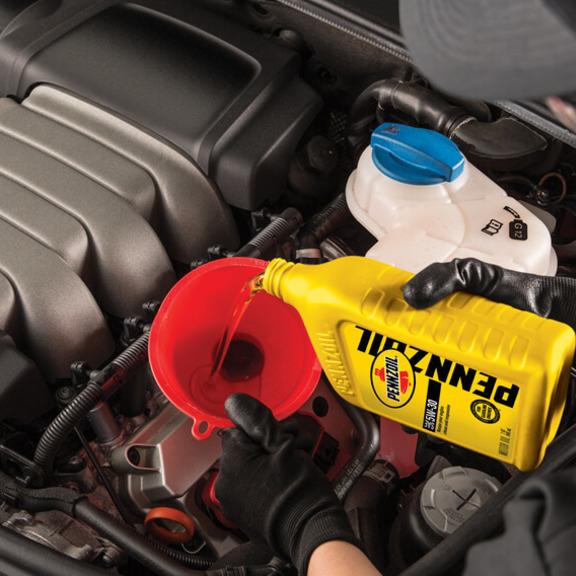 Whichever wheel is used to deliver the power from your engine to the road will experience more degradation than the non-driving tires. Most of the time these will also be the front wheels.
Whichever wheel is used to deliver the power from your engine to the road will experience more degradation than the non-driving tires. Most of the time these will also be the front wheels.
Rotating your tires allows all of them to experience the same amount of wear which dramatically increases their overall life span. Additionally, they wear more evenly, also increasing their usability by a substantial amount.
How Often Should You Get Your Tires Rotated?On average you want to get your tires rotated every 5,000 to 7,500 miles, depending on your driving habits. If you tend to accelerate quickly and brake hard then lean toward a shorter rotation cycle. Fortunately, 5,000 to 7,500 miles coincides with most vehicles’ recommended oil change cycle.
This gives you the perfect excuse to get both your oil changed and your tires rotated at a Jiffy Lube at the same time. There are however
two exceptions to this rule, however. With modern full-synthetic oil, a vehicle’s oil change interval may be double that of conventional motor oil.
A full-synthetic engine may only need an oil change every 15,000 miles. This is good for the budget because you need to buy less oil over a vehicle’s lifetime, but it does mean you would need to rotate the tires more often than getting an oil change.
Additionally, four-wheel drive (4WD) and all-wheel drive (AWD) vehicles need tire rotations more often for the best outcome. On average a 4WD or AWD vehicle should have its tires rotated between 3,000 and 5,000 miles. Again, throwing out the balance between oil changes and tire rotations.
Can You Do Your Own Tire Rotation?You can definitely perform your own tire rotation and your
vehicle most likely came with all the tools you need. The bare minimum you will
need is a lug wrench to remove and reinstall your lug nuts and a car jack, all
of which your vehicle should have.
There are different tire rotation patterns so make sure to consult your vehicle’s user manual for the right pattern.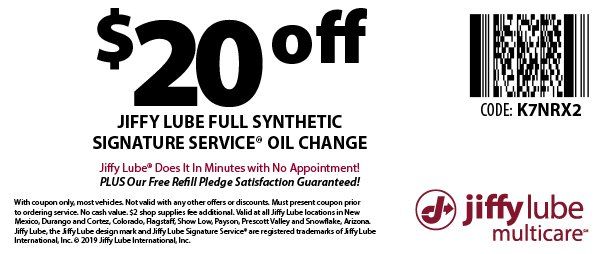 Also confirm that you do not have directional or staggered tires, as these will limit your tire rotation pattern options. Directional tires can only be rotated back to front while staggered tires can only be rotated left to right.
Also confirm that you do not have directional or staggered tires, as these will limit your tire rotation pattern options. Directional tires can only be rotated back to front while staggered tires can only be rotated left to right.
For the most part, Jiffy Lube will charge you around $40 to
rotate your tires. This is more expensive than other places but will save you
some time because you don’t need to visit multiple locations to get tires
rotated and your oil changed.
Keep in mind that Jiffy Lube likes to look for extra work.
They will most likely offer to change any other filters and try to find
something that is wrong with your vehicle. Filter changes are good for your
vehicle, but Jiffy Lube may recommend a new filter when one is not yet needed.
Like filing a tax return and cooking Thanksgiving dinner, learning how often to rotate tires is one of those things that no one ever teaches you growing up. But don’t worry we’ll dive into the world of tire rotation together and explain all the ins and outs. And by the end, you’ll basically be a rotation expert. (We’ll also be sure to answer that burning question, “How often should you rotate tires?”)
But don’t worry we’ll dive into the world of tire rotation together and explain all the ins and outs. And by the end, you’ll basically be a rotation expert. (We’ll also be sure to answer that burning question, “How often should you rotate tires?”)
You might be asking yourself, “Why do I need to rotate my tires? Aren’t they rotating every time I drive them?” Okay, we’ll give you that. But in this case, rotation means moving your four tires from their current positions to other spots on the vehicle. While this may sound simple, rotating your tires provides massive benefits. It helps extend the life of your tire treads, helps prevent you from losing traction, and can help prevent tires from becoming uneven, irregular, and noisy. Plus, your tire manufacturer’s warranty usually specifies how often to rotate tires to keep the warranty in effect.
So: how often should you rotate your tires? Unless you’ve had your tires rotated in the last few months, you’re likely due for a rotation today. Jiffy Lube®’s recommendation for how often to rotate tires is every 6,000 to 8,000 miles. And if you’re experiencing uneven tire wear, you may want to rotate them even sooner. Stop by your local Jiffy Lube® and a trained technician can perform an air pressure check, plus a tire inspection to see if it’s time to rotate your tires.
Jiffy Lube®’s recommendation for how often to rotate tires is every 6,000 to 8,000 miles. And if you’re experiencing uneven tire wear, you may want to rotate them even sooner. Stop by your local Jiffy Lube® and a trained technician can perform an air pressure check, plus a tire inspection to see if it’s time to rotate your tires.
While your four tires may all look the same at a glance, there are a variety of forces that can cause them to wear unevenly. These include:
If you’ve noticed any of these issues, get your tires rotated immediately and ask at the service center if there are any other underlying issues that need to be addressed.
Rotating tires is not like musical chairs – you can’t just match up any tire to any available spot. Consult your owner’s manual to find out how often to rotate tires and for a recommendation on a rotation pattern. Or better yet, talk to the technicians at your local Jiffy Lube®. They can determine the proper pattern based on your manufacturer guidelines and the type of tires on your vehicle. Certain tires, like staggered fitment tires, can only be rotated from side to side. So, it’s best to ask for expert advice on this topic.
Consult your owner’s manual to find out how often to rotate tires and for a recommendation on a rotation pattern. Or better yet, talk to the technicians at your local Jiffy Lube®. They can determine the proper pattern based on your manufacturer guidelines and the type of tires on your vehicle. Certain tires, like staggered fitment tires, can only be rotated from side to side. So, it’s best to ask for expert advice on this topic.
Your vehicle may have either a temporary spare tire or a full-size spare tire. If it’s a full-size spare tire, and your tires are relatively new, you can consider rotating the spare into use to get the longest life out of all your tires. If you have a temporary spare, it is intended only for emergency use and should not be rotated into use. Regardless of which type of spare you have, routine rotations offer a great opportunity to inspect your spare tire and inflate it to the proper level. Temporary spare tires usually require a much higher inflation level than the rest of your tires, so be sure to consult your owner’s manual or the placard inside the driver’s door jamb to find the correct level. If your temporary spare is more than six years old, you should also consider replacing it completely.
Temporary spare tires usually require a much higher inflation level than the rest of your tires, so be sure to consult your owner’s manual or the placard inside the driver’s door jamb to find the correct level. If your temporary spare is more than six years old, you should also consider replacing it completely.
As you can see, there’s a lot that goes into inspections, rotations, and knowing how often to rotate tires, and your local Jiffy Lube® will be glad to get you rolling again. They can perform a full rotation and inspection of all your tires, including the spare. When they’re finished, a second member of the team will even double-check the torque on lug nuts and fasteners to help ensure your safety. Meanwhile, you can think about more important things—like where you’ll drive during your next carefree 6,000 to 8,000 miles.
Read the Oil Bible from SO HOW OFTEN SHOUND I CHANGE MY OIL? through MAINTENANCE MINDERS - WHEN THE CAR TELLS YOU WHEN TO CHANGE THE OIL
This is a good read and has a lot of easy to understand concepts that make up modern computer oil change solutions.
** HOW TO CHANGE THE OIL?**
Never change engine oil too often. The more you do this, the longer the engine will last. This whole discussion about when exactly to change the oil is gray to some extent. Manufacturers usually list every 10,000 miles or so. Your classic car buddy says every 3,000 miles. Ole Bob with bad breath who drives a truck says he never changed the oil in his car. The fact is that during the normal combustion process, a large amount of water is formed and, depending on the wear of the engine, part of it enters the engine crankcase. A good crankcase breather system ensures that water is removed from the PDFQ, but even so in cold weather, a large amount of condensate will occur. This in itself is bad enough, since water is no good at lubricating the engine, but even worse, water dissolves any nitrates formed during the combustion process. If the memory of chemistry serves us right, it means that a mixture of nitric (HNO3) and nitric (HNO2) acids circulates around the engine! Thus, not only is it subject to high wear at start-up, but when the engine is cold, it suffers a high subsequent corrosion rate during normal operation or even during stationary operation. nine0003
nine0003
The point is that the optimal oil change time must be related to a number of factors, of which the distance traveled is probably one of the least important in most cases. Here is my choice, in approximate order of importance:
If a very smart (or obsessive) owner can probably come up with a really smart formula that includes all of these factors. However, we would give 1, 2 and 3 equal upper weights. Positions 1 to 3 must be taken together, as the given number of cold starts in the Dakar summer does not match the equal number held in Fargo in January.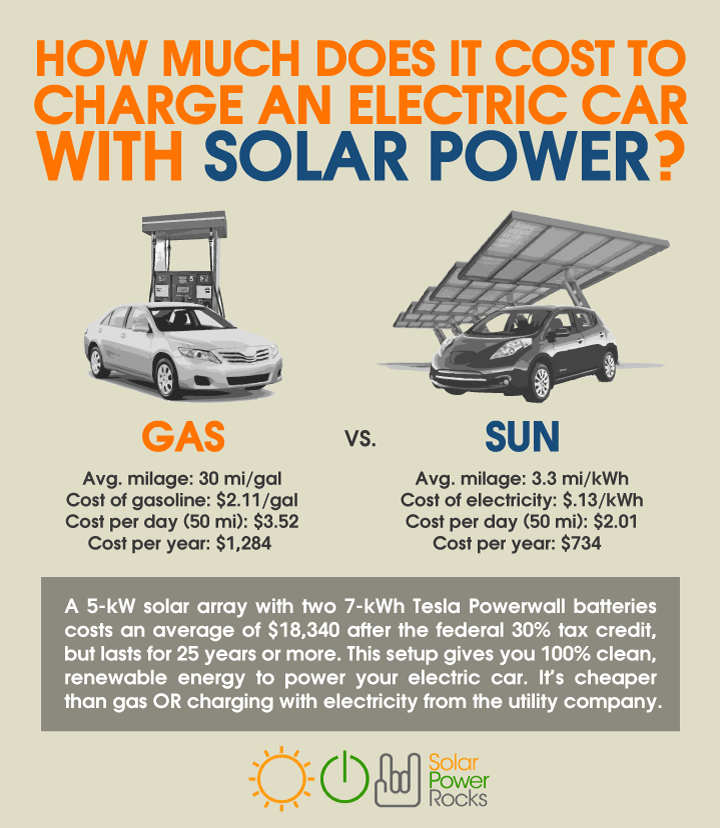 The effect will in any case be changed by how much gas gets past the pistons. What we really need is the severity and duration of the initial period of condensation. All other things being equal, this will indicate how much condensate will be produced, and we would guess more than anything determines when oil should be dumped. nine0003
The effect will in any case be changed by how much gas gets past the pistons. What we really need is the severity and duration of the initial period of condensation. All other things being equal, this will indicate how much condensate will be produced, and we would guess more than anything determines when oil should be dumped. nine0003
DAMMIT - GET TO THE POINT ALREADY!
Wait a minute - if you really want an answer, there are a couple more factors to take into account: Crankshaft cleaning (that's a smart term for sucking nasty fumes back out of the crankshaft) - or lack of it - is the decisive multiplicative factor influencing all other items listed above. As an example, the worst we've heard of is a Ford Fiesta from the mid-70s or so. Its crankcase exhaust pipe passed through a tiny hole directly into the intake manifold, which obviously couldn't handle the significant amount of crank smoke without ruining the carburetion. This vehicle has been used almost exclusively for 5 mile commutes to work, shops, etc. and has always been serviced "according to the book". Despite this (or because of it), the engine was fully loaded at 40,000 miles. Alternatively, he could find a machine that, thanks to the excellent scavenging of the crankcase, could withstand much more cold starts than without them. Given all this, our philosophy would be to completely ignore the distance and change the oil twice a year - around November and March. Move these dates around a little depending on the severity of the winter. The average family car will drive about 14,000 miles a year, and about 2/3 of those miles will be in March-November. At the end of this period, the vehicle will be approaching the manufacturer's recommended oil change interval - but all of these distances will be done in reasonable temperatures, including long holiday trips and fine weather. Between November and March, he can only do two to three thousand miles, all low-temperature runs and mostly short ones. nine0003
and has always been serviced "according to the book". Despite this (or because of it), the engine was fully loaded at 40,000 miles. Alternatively, he could find a machine that, thanks to the excellent scavenging of the crankcase, could withstand much more cold starts than without them. Given all this, our philosophy would be to completely ignore the distance and change the oil twice a year - around November and March. Move these dates around a little depending on the severity of the winter. The average family car will drive about 14,000 miles a year, and about 2/3 of those miles will be in March-November. At the end of this period, the vehicle will be approaching the manufacturer's recommended oil change interval - but all of these distances will be done in reasonable temperatures, including long holiday trips and fine weather. Between November and March, he can only do two to three thousand miles, all low-temperature runs and mostly short ones. nine0003
Around 1995 an article in the ANWB (ANWB being the Dutch equivalent of AA - or AAA in the American case) concluded more or less the same, that distance is not very important. In their case, they applied it to their road fleet, which did not cool down one morning. In fact, they almost never changed the oil. It worked for about 30,000 miles between oil changes. They also had some kind of water or acid indicator attached to the end of the dipstick and drove past it, not the distance. nine0003
In their case, they applied it to their road fleet, which did not cool down one morning. In fact, they almost never changed the oil. It worked for about 30,000 miles between oil changes. They also had some kind of water or acid indicator attached to the end of the dipstick and drove past it, not the distance. nine0003
POLICY RESPONSE - SPEAK ANSWER TO INPUT!
Avoiding this problem? We don't know how far a car travels in a year, where it lives, the owner's driving style, and more, so we can't say what's right for a given car. This author changed the oil and filter in his 1985 Audi Coupe every 5,000 miles. It had over 150,000 miles on it when it was finally sold, didn't leak or consume oil. My Subarus changed oil at 10,000 miles but there have been newer cars in warmer conditions. My vans had their oil changed at 8,000 miles or so. If you must have a number, then 8000.
MAINTENANCE MINDERS - WHEN THE CAR TELLS YOU WHEN TO CHANGE THE OIL
Many cars now come with service overseers, built-in systems designed to tell the driver when to change the oil, rather than leaving them guessing.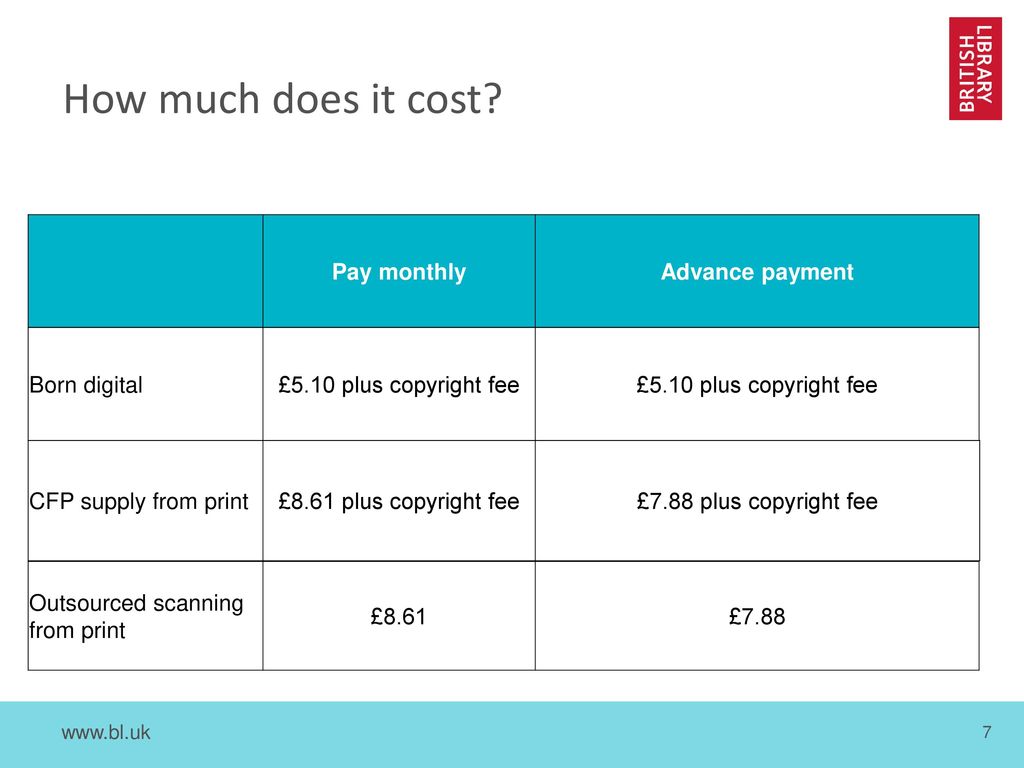 The first generation systems were nothing more than trip meters. When the car reached an interval of 3000 miles, the light came on. Now they are more involved. The system typically monitors driving style (in terms of how long the throttle is open for any given driving duration), intake air and outside temperatures, coolant temperature and fluctuations, and engine running time (determined by engine load and fuel octane). There is a "smart" formula that every manufacturer has in mind that can take any or all of these factors (and possibly more) to determine how quickly an average oil will age in an engine. When the system decides that time has elapsed, a light will come on on the instrument panel - usually a "Maint Reqd" or "Service Reqd" (Note - this is NOT a "check engine" light). On some vehicles, various trip computer settings can be scrolled on the bike to see the remaining oil life - usually given as a percentage. This is a handy feature that allows the driver at any time to roughly determine how much time is left before an oil change.
The first generation systems were nothing more than trip meters. When the car reached an interval of 3000 miles, the light came on. Now they are more involved. The system typically monitors driving style (in terms of how long the throttle is open for any given driving duration), intake air and outside temperatures, coolant temperature and fluctuations, and engine running time (determined by engine load and fuel octane). There is a "smart" formula that every manufacturer has in mind that can take any or all of these factors (and possibly more) to determine how quickly an average oil will age in an engine. When the system decides that time has elapsed, a light will come on on the instrument panel - usually a "Maint Reqd" or "Service Reqd" (Note - this is NOT a "check engine" light). On some vehicles, various trip computer settings can be scrolled on the bike to see the remaining oil life - usually given as a percentage. This is a handy feature that allows the driver at any time to roughly determine how much time is left before an oil change. This is useful for planning road trips - don't go on a 2000 km trip if the remaining oil life shows 10%. On vehicles with such systems, I would succumb to the on-board computer instead of trying to figure it out on my own. When the system tells you to change the oil, just do it. I found my guess at 8,000 miles up pretty close to the point where the service technician in my cars indicated that an oil change was due. nine0003
This is useful for planning road trips - don't go on a 2000 km trip if the remaining oil life shows 10%. On vehicles with such systems, I would succumb to the on-board computer instead of trying to figure it out on my own. When the system tells you to change the oil, just do it. I found my guess at 8,000 miles up pretty close to the point where the service technician in my cars indicated that an oil change was due. nine0003
| Designation | R13 | R14 | R15 | R16 | R17 | R18 | R19 | R20 | R20+ |
|---|---|---|---|---|---|---|---|---|---|
| Price for 1 wheel | 300 | 350 | 400 | nine0079 425475 | 550 | 650 | 700 | 800 | |
| Price for 4 wheels | 1200 | 1400 | 1600 | 1700 | 1900 | 2200 | 2600 | 2800 | 3200 |
| Removal / installation | 100 | 100 | 100 | 100 | 125 | 150 | 150 | 180 | 180 |
| Tire service | 80 | 100 | 120 | 140 | 150 | 180 | 260 | 250 | 300 |
| Balancing | 120 | 150 | 180 | 190 | 200 | 220 | 260 | 250 | 300 |
